PODRÓŻ DO AZJI//TAKE A WALK ON THE ASIAN SIDE
Podróż do Azji - spacer akustyczny po Stadionie X-lecia
Take a Walk on the Asian Side - an acoustic stroll around the 10th Anniversary Stadium
Przeczytaj opis wycieczki na Stadion, z czasów, gdy działał jeszcze Jarmark Europa. Prowadzi Joanna Warsza, współautorka projektu Podróż do Azji [www.laura-palmer.pl]
A report from the expedition to the "Europe Fair" in its prime by Joanna Warsza, co-author of the Trip to Asia project [www.laura-palmer.pl]
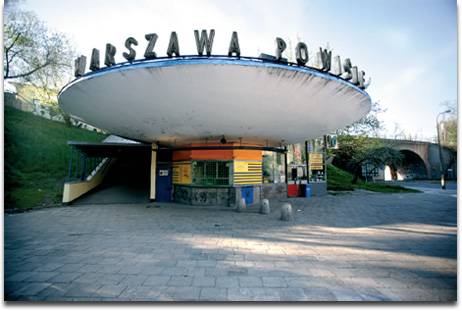
fot. Jacek Kołodziejski
Trasa prowadzi śladami Podróży do Azji - spaceru akustycznego, który odbył się w czerwcu 2006. Projekt nawiązywał do idei włóczenia się po mieście oraz do muzealnych wizyt z przewodnikiem. Terenem wędrówki był sektor wietnamski na Jarmarku Europa. Podroż rozpoczynała się na wprost Muzeum Narodowego, na stacji Warszawa Powiśle. Widzowie rejestrowali się w stanowisku check-in, gdzie otrzymywali bilety, mp3, mapę trasy z punktami, w których należało włączyć kolejne utwory, kraciastą torbę z towarem oraz 5 000 wietnamskich dongów. Na ścieżkę dźwiękową składały się komentarze do rzeczywistości Stadionu, gwar wietnamskich miast, wywiady, ckliwe karaoke, uwagi i ostrzeżenia. Projekt powstał z tęsknoty za społeczeństwem wielokulturowym oraz po to, by uczynić Wietnamczyków bardziej widzialnymi.
This walk was originally organized in June 2006, and was designed to combine certain elements of typical wandering around the city with a guided museum tour. The walk took us to the Vietnamese sector of Jarmark Europa, and it all begins across the street of the National Museum, at the Warsaw - Powiśle Train Station. Participants registered at a check-in at which time they received tickets, an mp3 player, a map with a key when to listen to the particular parts of the sound track, a big woven plastic carrier bag, and some money - 5000 Vietnamese dong. The sound track on the mp3 player included a series of commentaries about the Stadium, street sounds from a typical Vietnamese city, interviews, karaoke performances, and recommendations. The project was borne of longing for a multi-cultural society, and a desire to make our Vietnamese community more visible.
BĄDŹ TURYSTĄ U SIEBIE / BE A TOURIST AT HOME
Każdy chyba zna to uczucie: wysiadasz z samolotu i ogrania cię przedziwny dreszcz, wobec tego, co obce, inne, nieoswojone. Musisz zmierzyć się nie tylko z nieznanym terytorium, ale przede wszystkim z własnymi wyobrażeniami i obawami. Kupujesz oferty z katalogów biur podróży? Latasz na drugą półkulę? Bądź turystą u siebie w mieście, przejedź się trzy minuty drogi stąd, przerzuć się do Azji przez zieloną granicę Wisły. Podroż jest co prawda o wiele za krótka, żeby poznać świat Wietnamczyków w Warszawie, jednak wystarczająco długa, żeby skonfrontować się ze swoimi uprzedzeniami i naruszyć trajektorię wykonywanej codziennie trasy. Co setny warszawiak jest Wietnamczykiem i niestety prawie każdy "nielegalny" warszawiak jest Wietnamczykiem. Może w tej nielegalności tkwi przyczyna niewidzialności tej fascynującej grupy etnicznej.
Everybody knows the feeling: you get off a plane and you feel a strange chill about your new surroundings, things that are foreign, different, yet to be tamed. Not only must you deal with an unknown place, but primarily with your own apprehensions and imagination of what it should be like. Do you ever buy package tours? Have you traveled to the other hemisphere? Well why not be a tourist in your own hometown? Jump on a train, and three minutes later, after crossing the friendly frontier of the Vistula River, you are in Asia. The trip is much too short to really get to know the world of the Vietnamese community in Warsaw, yet it is long enough to enable us to confront what we see with our prejudices and disrupt the trajectory of our everyday routine. Every 100th inhabitant of Warsaw is of Vietnamese origin, though unfortunately the Vietnamese comprise nearly 100% of the capital’s illegal aliens. Perhaps this unregulated status stands behind the invisible nature of this fascinating community.
WARSZAWA POWIŚLE - MOST ŚREDNICOWY - WARSZAWA STADION / POWIŚLE TRAIN STATION - ŚREDNICOWY BRIDGE - STADION TRAIN STATION
Rozpocznij wycieczkę na stacji Warszawa Powiśle. Kup bilet i przejedź tylko jeden przystanek, na druga stronę Wisły. Oglądaj przeprawę przez rzekę przez prawe okno pociągu. Most średnicowy przecina na skos Wisłę i wbija się pomiędzy stragany najbardziej wysuniętej na północ części Jarmarku Europa, w środek wietnamskiego sektora. Z mostu rozlega się wspaniały widok na cały kompleks targowiska, na dachy pawilonów, poszczególne części bazaru oraz na koronę Stadionu. Kiedy po praskiej stronie rzeki pojawiają się pierwsze zabudowania, łatwo dostrzec, że w niczym nie przypominają one lewobrzeżnej Warszawy. Dachy straganów, chaotyczność alejek, bujna, wręcz dzika roślinność tworzą miniaturę suburbii azjatyckich miast, budowanych pośpiesznie, nakładem wielkiej energii, jednak bez planów architektonicznych i dobrych materiałów. Mały Wietnam, przy którym zatrzymuje się pociąg, to płynny, ulegający ciągłym przeobrażeniom świat, który może zniknąć następnego dnia. Nie masz gwarancji, że jutro zastaniesz ten sam układ urbanistyczny. Przejeżdżając przez Wisłę przekraczasz wyimaginowaną granicę europejsko-azjatycką i po 3 minutach wysiadasz na stacji Warszawa Stadion.
Begin the trip at the Warsaw-Powiśle station. Buy a ticket and travel one stop to the Stadium station on the other side of the Vistula River. Look out the window to the right and enjoy the view of the river crossing. The Średnicowy Bridge begins at the mouth of the tunnel, crosses the river, and cuts between the stalls of the Vietnamese Sector of Europa Fair. From the bridge we can enjoy a vast overview of the whole bazaar; we can see the pavilions, particular sectors, and the upper sections of the Stadium. At first glance, the buildings on the Praga side of the river look nothing like left-bank Warsaw. The roofs of the vendors’ stands, the chaotic layout of the bazaar, and the rich and wild foliage blend to create a miniature of an Asian city suburbs, constructed in a hurry, with great effort and energy, yet without a blueprint or access to good building materials. Little Vietnam is a unstable world in constant transformation. Here today gone tomorrow. Crossing the Vistula River you cross an imaginary border between Europe and Asia. Three minutes have passed, and now it is time to deboard onto the platform at the Warsaw-Stadium station.
BAR DUNG PHÓ I PLACYK POD WIADUKTEM / THE DUNG PHÓ BAR AND THE SQUARE UNDER THE VIADUCT
Po wyjściu z pociągu idź w prawo, w kierunku rzeki. Peron zwęża się i zamienia w stromą, prowadzącą w dół alejkę pomiędzy pomieszczeniami magazynowymi. Po 300 metrach po lewej stronie zobaczysz żółty bar o nazwie Dung Phó. Jest to jeden z lokali najdłużej otwartych na Stadionie, działa do około 16.00. Stadion, a przede wszystkim sektor wietnamski, funkcjonują według czasu azjatyckiego. Praca zaczyna się tu o 3 rano czyli pięć godzin wcześniej niż zazwyczaj w Warszawie. Do Dung Phó schodzą okoliczni pracownicy po zamknięciu pawilonów. Podczas projektu zawisł tu feministyczny plakat Alisy Ahn Kotmair, artystki wietnamskiej z Berlina, przedstawiający wydekoltowaną kobietę palącą papierosy. Do dziś publiczne zapalenie papierosa przez kobietę jest uważane w Azji za nietakt. Zresztą nie trudno zauważyć, że do baru przychodzą głównie mężczyźni, i że to oni dominują w towarzyskiej przestrzeni publicznej.
Po wyjściu z baru dojdź do placyku pod wiaduktem. Jest to jedno z najbardziej ruchliwych miejsc w sektorze wietnamskim i chyba najlepszy punkt obserwacyjny wielokulturowości Stadionu. Wszystkie okoliczne sklepiki z butami prowadzą tylko sprzedaż hurtową, więc nie nastawiaj się na zakupy. Placyk jest także miejscem spotkań tak zwanych "taksówkarzy" przewożących towary na metalowych wózkach, inaczej zwanych "uwagami" - od jedynego słowa, które znają po polsku i które powtarzają bez przerwy przeciskając się po wąskich alejkach. Taksówkarzami zostają ci, którzy dopiero przyjechali do Polski i mają ogromne długi do spłacenia. Pracują od świtu do 16.00, 17.00. Zarabiają po 30-40 zł dziennie, mieszkają po kilku w wynajmowanych kawalerkach. Możesz im dać zarobić - za kilka złotych podwiozą ci towar.
Dlaczego Wietnamczycy wybierają właśnie Polskę? Nadzieję na azyl pozwala im mieć solidarnościowa przeszłość. Dysydenci z kraju komunistycznego mają prawo oczekiwać zrozumienia nad Wisłą. Niestety, dotychczas rząd RP przyznał im zaledwie jeden oficjalny azyl. Na Stadionie na szczęśliwy los czekają więc wietnamscy pracownicy naukowi, przedsiębiorcy, nauczyciele czy lekarze.
Go right on the platform, back towards the river. The platform narrows into a small lane leading through a storage area. Continue another 300 meters, and on your left will be the Dung Phó Bar. Closing time is 16:00, and this bar is among those open longest at the Stadium. Everything here, and first of all the Vietnamese sector, runs on Asian time. The workday begins at 03:00 in the morning, a full five hours earlier than elsewhere in Warsaw. Dung Phó is frequented by workers from nearby stands. During the project, the feminist poster by Alyssa Ahn Kotmair, Vietnamese artist living in Berlin was hanged here - it presented a woman in a low-cut blouse smoking a cigarette. To this day, it is considered rude for a woman to smoke in public in Asia. One look at the clientele of the bar and you see that it is mainly men who generally dominate the public space.
After leaving the bar walk toward the little square under the viaduct. This is the busiest spot in the Vietnamese sector, and an ideal place to observate the multicultural Stadium. This square is a great place for playing the urban flâneur, an invisible vagrant thrill seeker. Forget about shopping as all the stands belong to wholesalers. The square is also the meeting point for "taxi drivers" - deliverers with metal carts they use to carry goods. They are otherwise called "Attention" ("Uwaga" in Polish), for the one word they can say in the local language and yell out as they come through the narrow passageways. It is the new comers with the largest debts to pay back who become taxi drivers. Attentions work from dawn till 4 or 5 pm, earn 30-40 PLN a day, and live together in cramped rented studio apartments. They are eager to earn more money, and for a small change they will carry whatever you have.
Why do the Vietnamese choose Poland? Those from the opposition hope to get political asylum. Dissidents from communist countries have a right to expect a little sympathy in Poland. Unfortunately, so far the Polish government has granted only one person with official political asylum. And thus the Stadium remains a waiting room for businessmen, teachers, sceintists and doctors who otherwise could not undertake gainful employment.
BĂNG SINH VIÊN
Idź dalej w lewo, wzdłuż nasypu kolejowego, miniesz stanowisko 105 i po około 10 minutach dojdziesz po prostopadłych alejek. W alejce nr 10, po prawej stronie mieści się wypożyczalnia i sklep-karaoke Băng Sinh Viên. Ukryty za harmonijkowymi drzwiami, sklep prowadzi przede wszystkim działalność piracką, jednak lokalne oddziały straży miejskiej przymykają na to oko. Niezliczone seriale na VHS, musicale, albumy, telenowele i płyty karaoke są z jednej strony malowniczymi kopiami kopii, z drugiej zaś fabryką marzeń dla wielu żyjących tęsknotą i nie mówiących po polsku Wietnamczyków.
From the square go left along the railway enbankment, past stand number 105. Keep walking about 10 minutes and you will come to the perpendicular paths. On path nr 10, on the right side the Băng Sinh Hien Karaoke Shop is located. Behind the folding doors you will find an outlet for piratical films and music to which the local City Guard turn a blind eye. Countless VHS with TV series on, DVD films, soap operas and Kareoke discs are on one hand picturesque copies of copies of everything, and on the other a dream factory for many homesick non-Polish speaking Vietnamese.
MAI THÁI
Przy kolejnym placyku, położonym na lekkim wzniesieniu, znajdziesz sklep Mai Thái. Sklep prowadzi sprzedaż produktów spożywczych: od zupek jednominutówek, przez różne rodzaje tofu, trawy cytrynowe i liście cytryny, imbir, oleje sezamowe, ryż jaśminowy, kardamon, grzyby, sosy sojowe i hoisin, mrożone ryby, krewetki i kalmary. Właściciel sklepu (a także restauracji wietnamskiej przy ul. Długiej) chętnie opowie o pochodzeniu produktów i ich użyciu. Zwróć uwagę na buddyjski ołtarzyk, za kasą po prawej stronie, na palące się kadzidełka, banknoty o nominałach 1 000 000 dolarów, papierosy oraz inne przyjemności, których zmarli chcieliby doświadczać po śmierci.
At the next little square on a small prominence you will fild the Mai Thái Store. This grocery sells everything from instant noodles to various types of tofu, lemon grass and leaves, ginger, sesame oil, jasmine rice, kardamon, wild mushrooms, soya sauce, hoisin sauce, frozen fish, shrimp and octupus. The owner of the store (and a restaurant on Długa St.) gladly shares everything he knows about his products rigin and how to use them. Note the Buddhist Altar behind the cash register on the right side, burning incenses, $1,000,000 bills, cigarettes and other pleasures people wish to experience in their afterlife.
THANG LONG I PAGODA BUDDY WSPÓŁCZUCIA / THANG LONG AND THE COMPASSIONATE BUDDHA PAGODA
Przez tunel przy stacji Warszawa Stadion dojdź do ul. Sokolej, idź w prawo i szukaj adresu Zamoyskiego 4. Wejdź na dziedziniec centrum kultury Thang Long. Jest to malownicze miejsce, uważane jednak przez opozycjonistów wietnamskich za reżimowe i zbratane z ambasadą. W głębi po prawej stronie ubita ścieżka prowadzi do wiecznie zielonej pagody. Urocze plastikowe chryzantemy, nenufary, drzewka i kwiaty kwitną tu cały rok. Świątynia jest miniaturą Pagody Na Jednej Nodze w Hanoi, poświęconej Buddzie Współczucia buddyzmu Mahajany. Mniej niż połowa Wietnamczyków w Polsce to buddyści, większość to chrześcijanie lub niewierzący. Jeżeli będziesz mięć szczęście, spotkasz pana Hà Minh Hiên, który opiekuje się świątynią i może ci o niej dokładnie opowiedzieć. Wejdź po schodkach na górę i obróć się. Zobaczysz… Port Praski, Wisłę i kamienice Pragi, a za sobą przeznaczony do rozbiórki Stadion X-lecia. Nagle przypomnisz sobie, że jesteś w fanatycznie monokulturowym mieście, które jeszcze długo takim pozostanie, jeśli nie pomożesz Innym dać się usłyszeć i zauważyć.
Go through the tunel at the Stadium Station toward Sokola St., go right and look for 4 Zamoyskiego St.. Enter the courtyard of the Thang Long Cultural Center. This is a lovely place though representatives of the Vietnamese political opposition believe it to be pro-regime and accuse it of colloboration with the Vietnam Embassy. On the right a firm path leads to the evergreen Pagoda. Charming plastic chrysanthemums, nenufares, other trees and flowers bloom all year round. The temple is a minature Pagoda set upon one leg from Hanoi, dedicated to the Compassionate Buddha of Mahayana Buddhism. Less than half of the Vietnamese in Poland are Buddists, the majority are either Christians or aetheist. If you are lucky you will meet Mr. Hà Minh Hiển, the keeper of the temple, who can tell you all the details. Take the stairs up, turn around and you will see... the Żerański Channel, the Vistula River and the tenement-houses of North Praga. Behind you is the soon-to-be-demolished X-th Anniversary Stadium. Suddenly you recall that you are in a fanatically monocultural city, which will remain so unless you help Others be heard and be noticed.



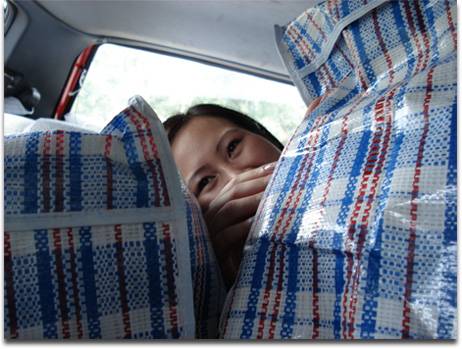
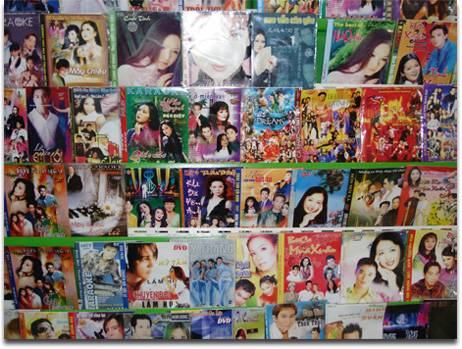
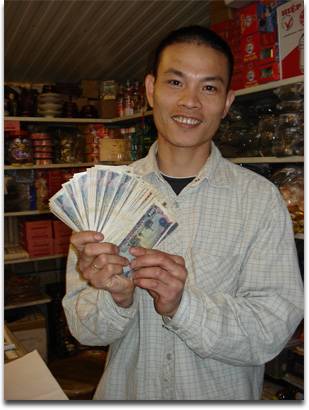
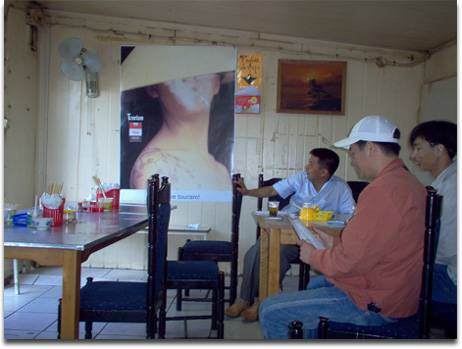
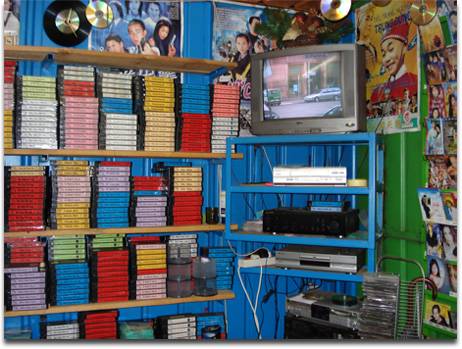
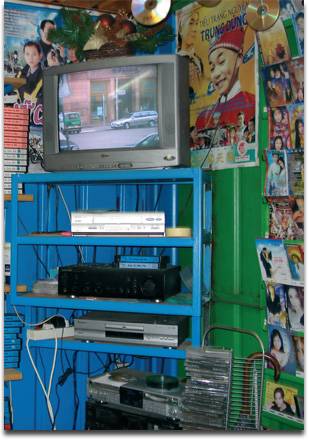
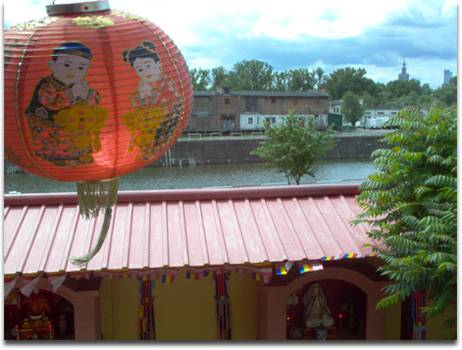








4 comments:
piękna sprawa, szkoda ze tak malo zdjec. precz z euro 2012, chcę Jarmarku Europa ,a nie "Europy".
Vietnamese Tet holiday
Hi,
I contact you because we are 2 vietnamese girls living in Kaunas, Lithuania, and there as there is no Vietnamese or Chinese community here, we would like to go to go to Warsaw for the new year celebration the 7th of February.
Can you inform us about the differents events/celebrations and places that will be hold in Poland ? Or how to get into contact with the vietnamese community there ? Thank you very much.
I cannot find Vietnamese association's address in Poland to contact. I called to the ambassy there twice but the signal often is stopped. So i find hard to contact vietnamese community in poland.
Wainting for your reply,
Best regards,
Nguyen thi hong Ly
hi
nice to hear from you. yes there is a party in warsaw that i Know of. organised by arteria (www.arteria.art.pl) in the club called Zwiaz mnie in the distric of Praga. check also the webside of kontynent.waw.pl
best
joanna
Jesli ktos nie mial mozliwosci zobaczenia na zywo alejki
zapraszamy na wirtualna wycieczke http://www.slodkokwasna.pl
Post a Comment